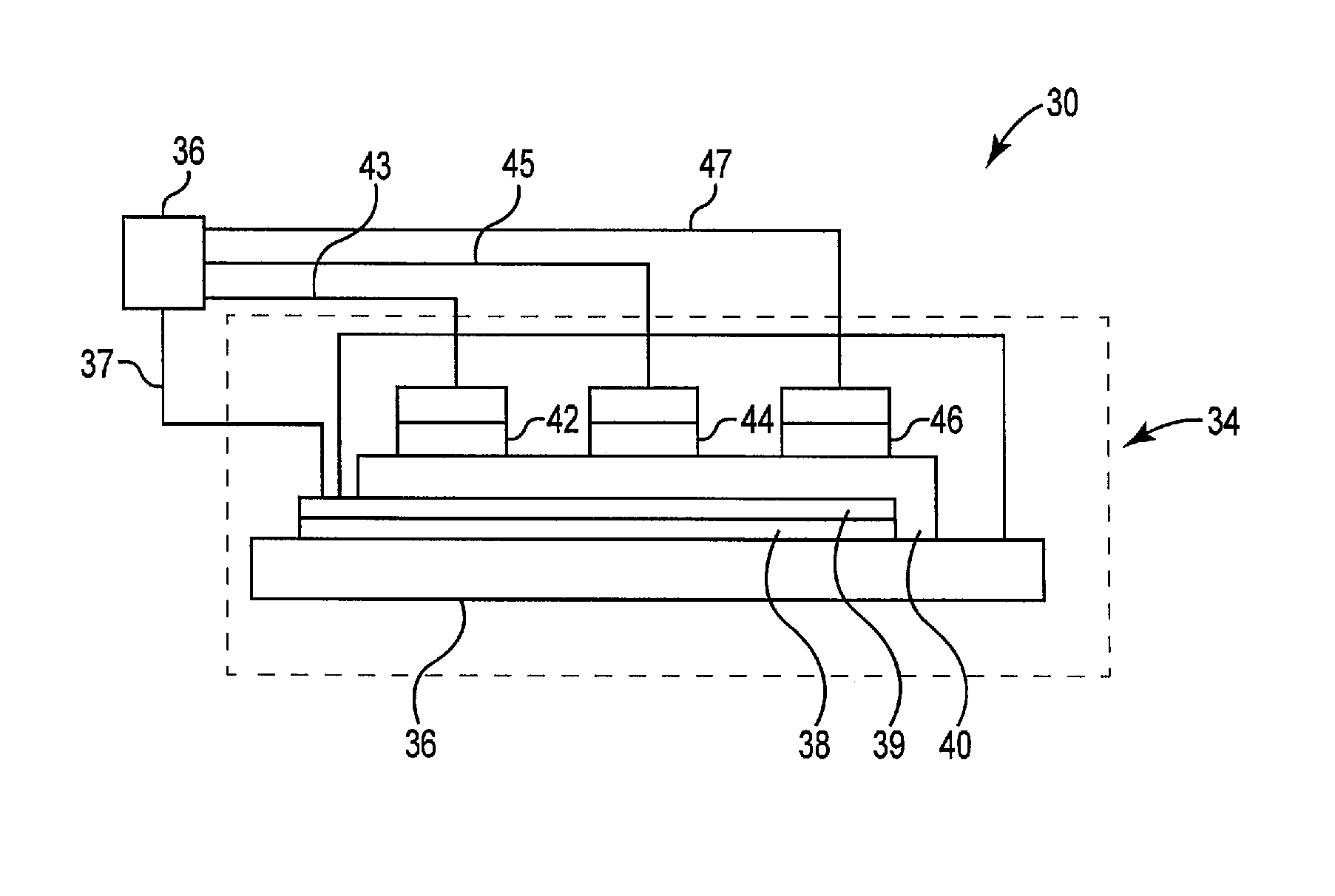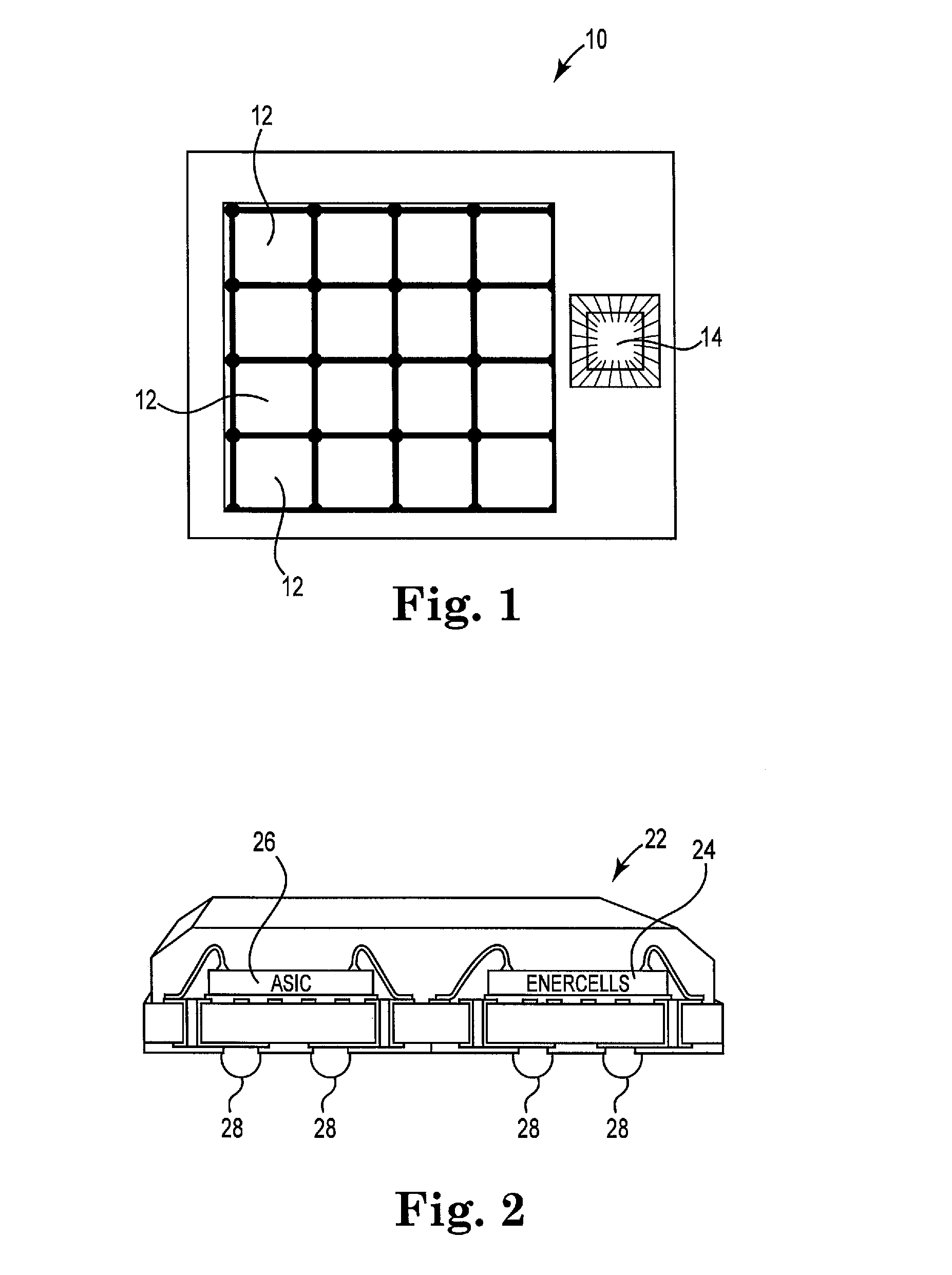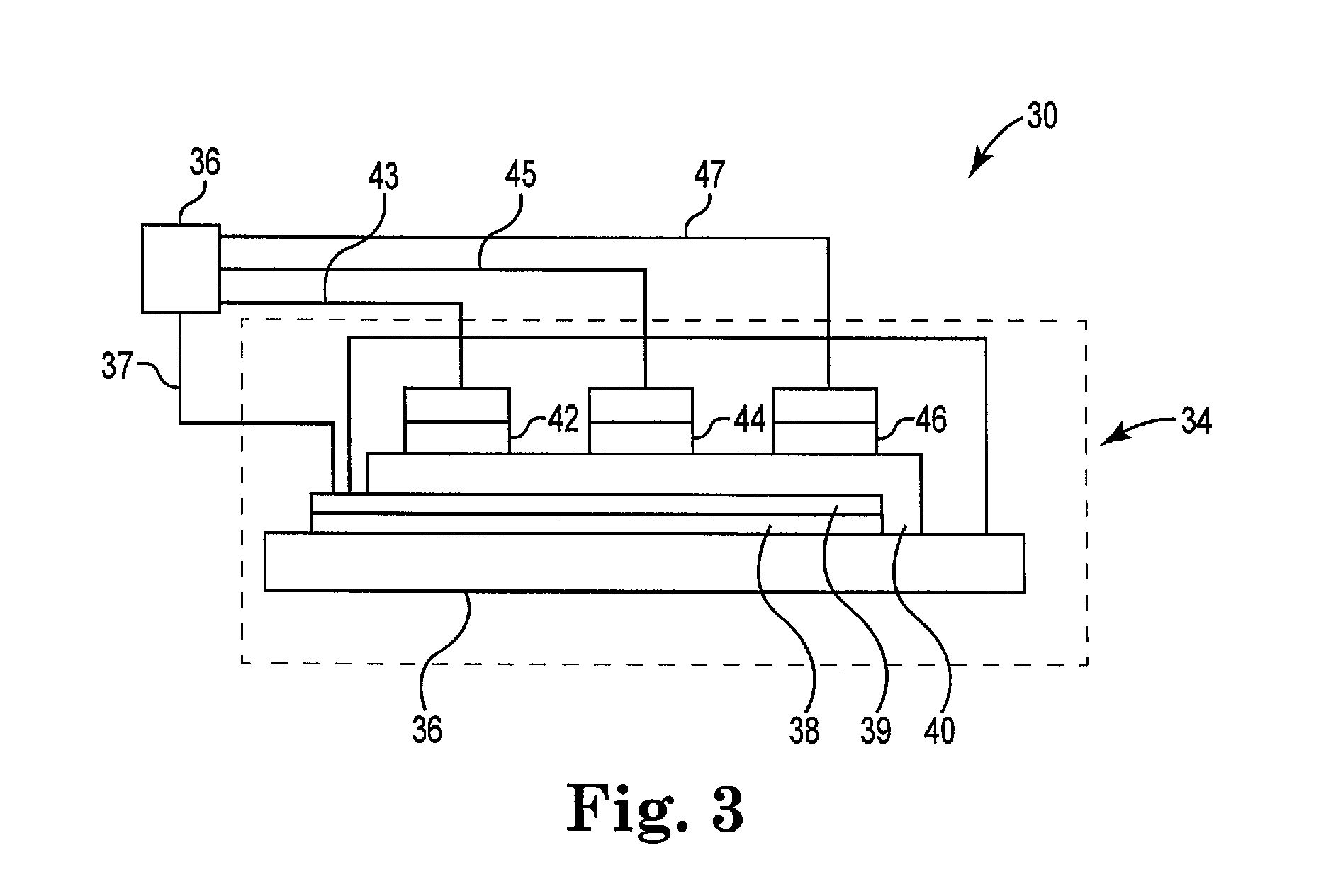Multi-cell thin film microbattery array
a thin film microbattery array and multi-cell technology, applied in secondary cell manufacturing, final product manufacturing, safety/protection circuits, etc., can solve the problems of microbattery problems, microbattery weaknesses or faults, and particularly difficult manufacture of rechargeable thin film microbatteries on a high yield and high reliability basis, etc., to achieve the effect of extremely low level of inoperability
- Summary
- Abstract
- Description
- Claims
- Application Information
AI Technical Summary
Benefits of technology
Problems solved by technology
Method used
Image
Examples
Embodiment Construction
[0026]It is to be understood that a device and method in accordance with the present invention includes, but is not limited to, novel combinations of conventional components, and not just particular detailed configurations thereof. Accordingly, the structure, methods functions, control and arrangement of conventional components and circuits have, for the most part, been illustrated in the drawings by readily understandable block representations and schematic diagrams, in order not to obscure the disclosure with structural details which will be readily apparent to those skilled in the art, having the benefit of the description herein. Further, the invention is not limited to the particular embodiments depicted in the exemplary diagrams, but should be construed in accordance with the language in the claims.
[0027]For purposes of the present invention, a thin film microbattery cell is a microbattery cell having dimensions not exceeding a longest dimension of 60 mm, more preferably not e...
PUM
| Property | Measurement | Unit |
|---|---|---|
| area | aaaaa | aaaaa |
| voltage potential | aaaaa | aaaaa |
| voltage potential | aaaaa | aaaaa |
Abstract
Description
Claims
Application Information
 Login to View More
Login to View More - R&D
- Intellectual Property
- Life Sciences
- Materials
- Tech Scout
- Unparalleled Data Quality
- Higher Quality Content
- 60% Fewer Hallucinations
Browse by: Latest US Patents, China's latest patents, Technical Efficacy Thesaurus, Application Domain, Technology Topic, Popular Technical Reports.
© 2025 PatSnap. All rights reserved.Legal|Privacy policy|Modern Slavery Act Transparency Statement|Sitemap|About US| Contact US: help@patsnap.com



